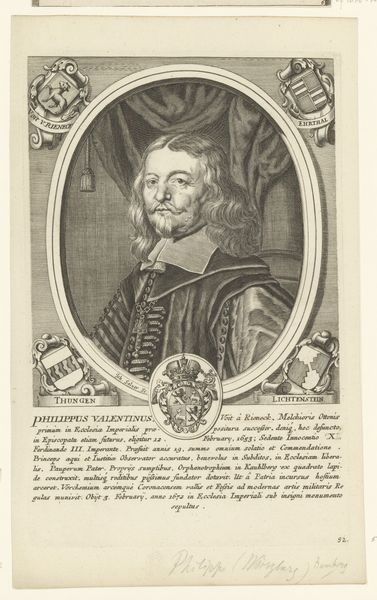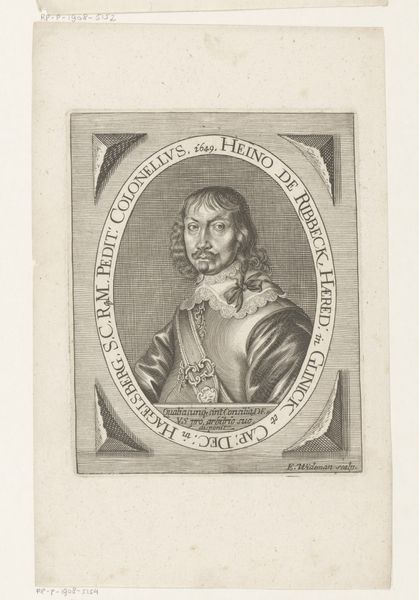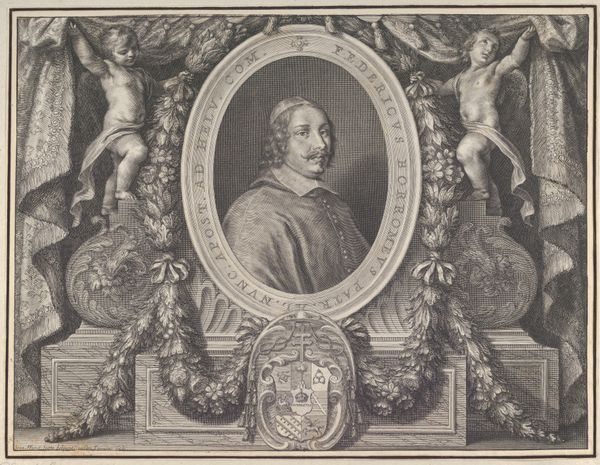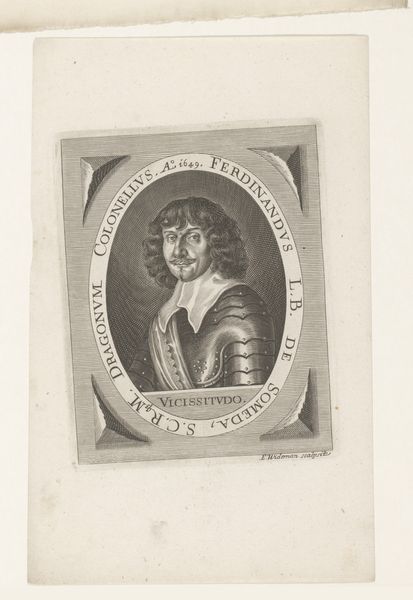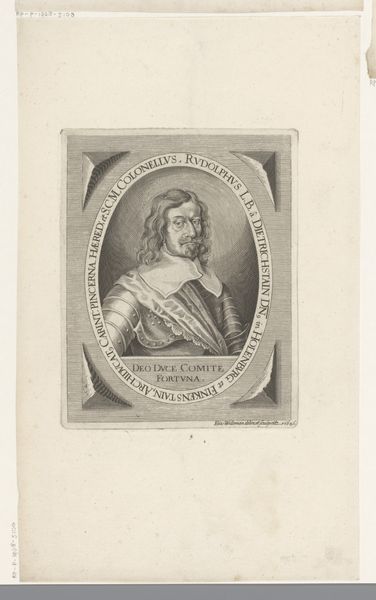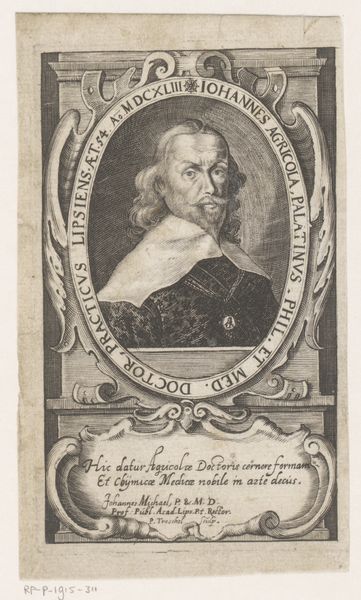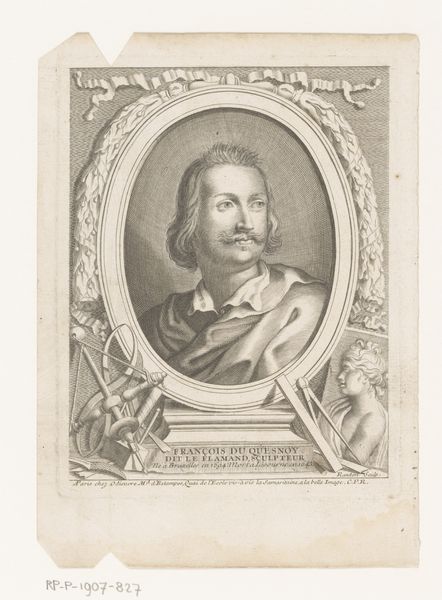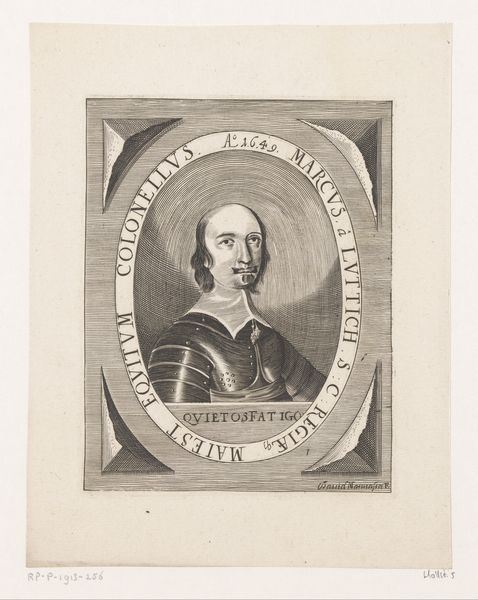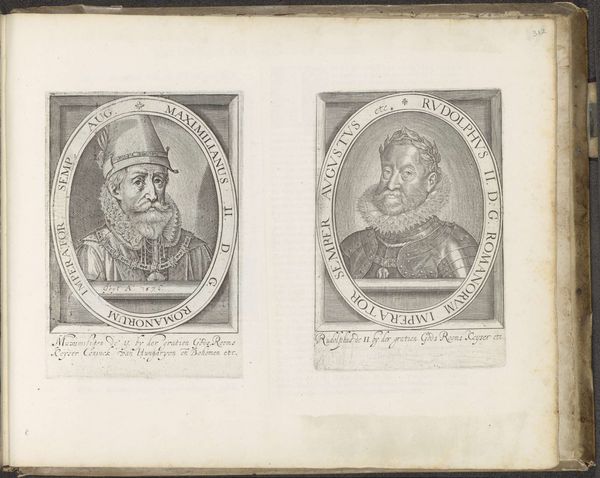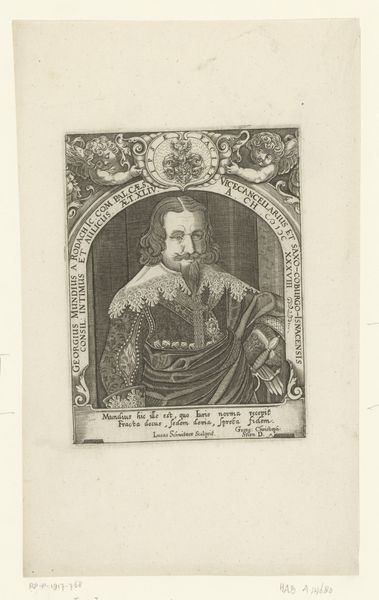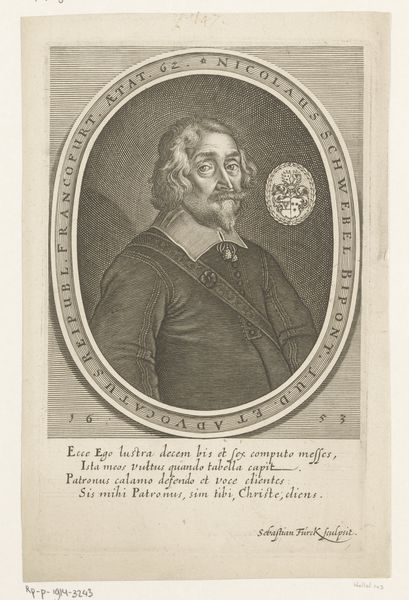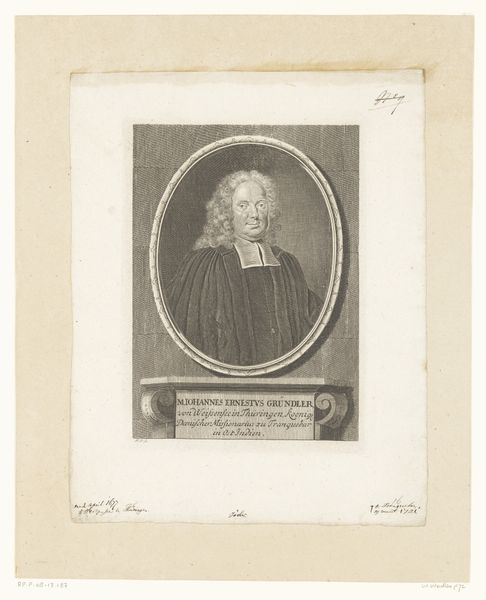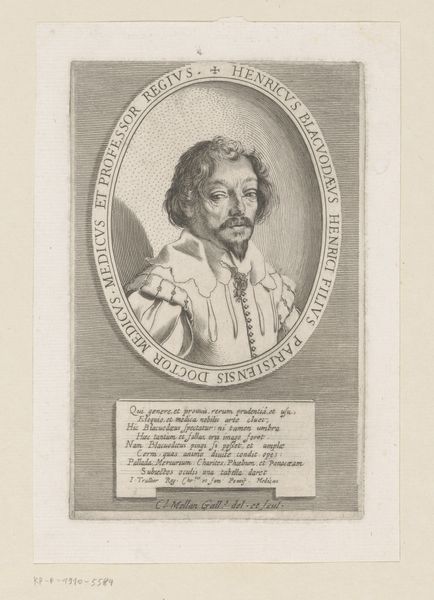
print, engraving
#
portrait
#
baroque
# print
#
old engraving style
#
figuration
#
line
#
history-painting
#
engraving
Dimensions: height 93 mm, width 112 mm
Copyright: Rijks Museum: Open Domain
Curator: This engraving, "Portraits of William II and Floris V," dates back to 1712. The anonymous artist has given us paired, framed depictions using a decidedly Baroque line style. What strikes you immediately? Editor: The contrasting vibes are hard to ignore. William looks regal and distant, while Floris seems softer, almost vulnerable with that falcon perched on his shoulder. There is also something that reads a bit satirical here, almost mocking their royal statuses by exaggerating their features in line art. Curator: The composition is rather symmetrical, isn't it? Two near-identical circular frames, the same lettering, positioned almost like coins. But if we focus on the portraits themselves, consider the use of line—how precise and delicate in the detailing of their garments, especially when drawing attention to status signifiers. Editor: Absolutely, and speaking of signifiers, let’s unpack the power dynamics. We have these two figures, both portrayed with markers of power - crowns, fur collars - and a rather pompous description under their respective portraits: "Guillaume n. Comte de Hollande.. premier Roi Romain" and "Florent v. Conte de Hollande &c. fils &c. successeur Guillaume II" - this image essentially functions as a record legitimising inherited authority at a time when European monarchs were desperate to prove divine rights. Curator: Yes, the inscriptions emphasize legitimacy through lineage, and while your points regarding potential satire are compelling, there’s also a conscious attempt to historicize and immortalize them. What the engraver prioritizes through meticulous marks, precise contour lines and careful construction is creating an image designed to project authority and permanence. Editor: The artwork exists at an interesting intersection. The artist's aim could be less to provide commentary, or more an effect of their interpretation in retrospect – something inherent to any image, whether deliberately placed by the engraver, or found by us looking at it now. Either way, it's sparked questions for us about how this reflects contemporary discussions on legacy and representation. Curator: Indeed, whether through its sharp lines, considered design, or through what you identify as inherent qualities of its subject matter, this print leaves us with much to contemplate about how artists of the past engaged with the theme of sovereignty.
Comments
No comments
Be the first to comment and join the conversation on the ultimate creative platform.
